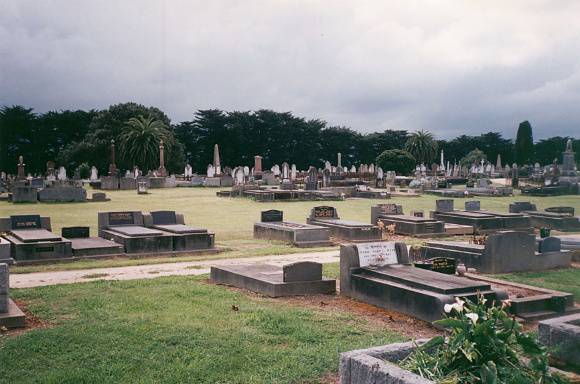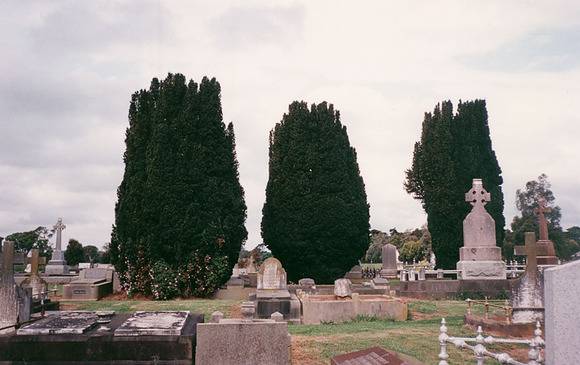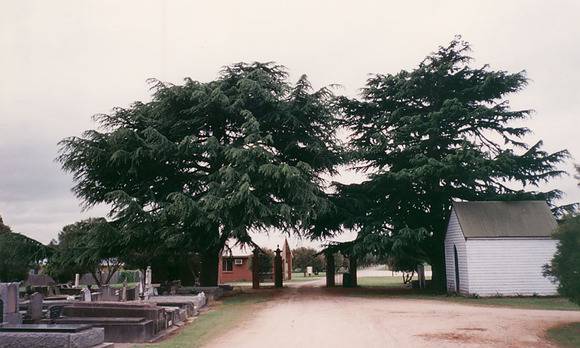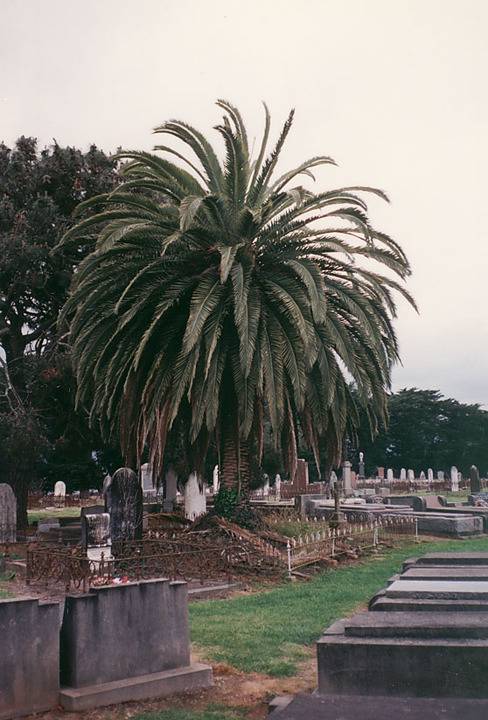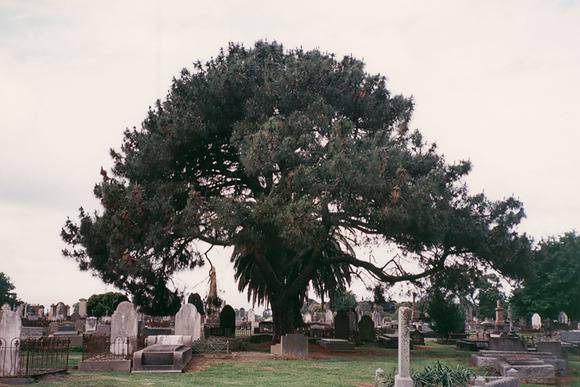| Back to search results » | Back to search page » |
|
Sale Cemetery
LocationSale-Maffra Road,, SALE VIC 3850 - Property No B7323
File NumberB7323LevelState |
|
Statement of Significance
What is significant? The Sale Cemetery, established in the 1850s, was influenced by picturesque ideals of overseas garden cemeteries. It was extended twice in 1866. The cemetery contains curved pathways and is divided into three sections representing the main denominations of the earlier settlers - Catholic, Church of England and Presbyterian. Apart from the layout and main plantings, other attributes of the cemetery include the cypress hedge and remnant fencing, the entrance gate, plantings (especially on graves), the small timber sexton's shed, and a rich collection of monuments and memorials made from overseas and local materials and decorated with a wide variety of religious and artistic motifs. The collection includes five rare surviving legible memorials probably made from local River Red Gum that date from the 1850s. Many prominent citizens and local pioneers are buried in the cemetery. A war graves section was formed during the Second World War.
How is it significant? The Sale Cemetery is significant for architectural, aesthetic, historic and social reasons at a state level.
Why is it significant? The Sale Cemetery, set aside in 1857 and in continuous use since then, is of cultural significance to the state of Victoria. It is an early example in Victoria of a cemetery influenced by picturesque ideals in the manner of European and North American garden cemeteries which gained worldwide popularity in the early to mid nineteenth century. This is exemplified by its layout and design with curved gravel paths enclosing denominational compartments, carefully placed plantings and focal architectural features.
The Sale Cemetery is also significant for its collection of trees and plants, such as the cypress hedge, which are typical of nineteenth century cemeteries in Victoria as they demonstrate strong associational links with their cemetery setting.
The cemetery's collection of buildings and structures are of great importance. It includes representative examples of typical features such as the timber chapel, timber picket fencing, monuments and memorials.
The cemetery's close links with the township and surrounding district further cements its position as a significant heritage site. Many local people are buried there and there are several graves which have particularly strong connections with Sale institutions, such as the Sisters of Sion memorial and the war graves section where locals who served in the Second World War are laid to rest. Settlers buried in the Sale Cemetery were pivotal to establishing and initiating the growth of the town, as well as the Gippsland region. In addition, those buried in the cemetery include local entrepreneurs, some of whom were the first white settlers in eastern Victoria and instrumental in developing Gippsland's agricultural and political scene. Some of Gippsland's former state government and council representatives are buried in the cemetery, as well as the first white settler to discover Gippsland, Angus McMillan. Others buried in the cemetery were also central to the growth and prosperity of Sale and its neighbouring towns while working as farmers, labourers and businessmen.
Classified: 28/08/2006
(Includes G13025)
Group
Cemeteries and Burial Sites
Category
Cemetery/Graveyard/Burial Ground


